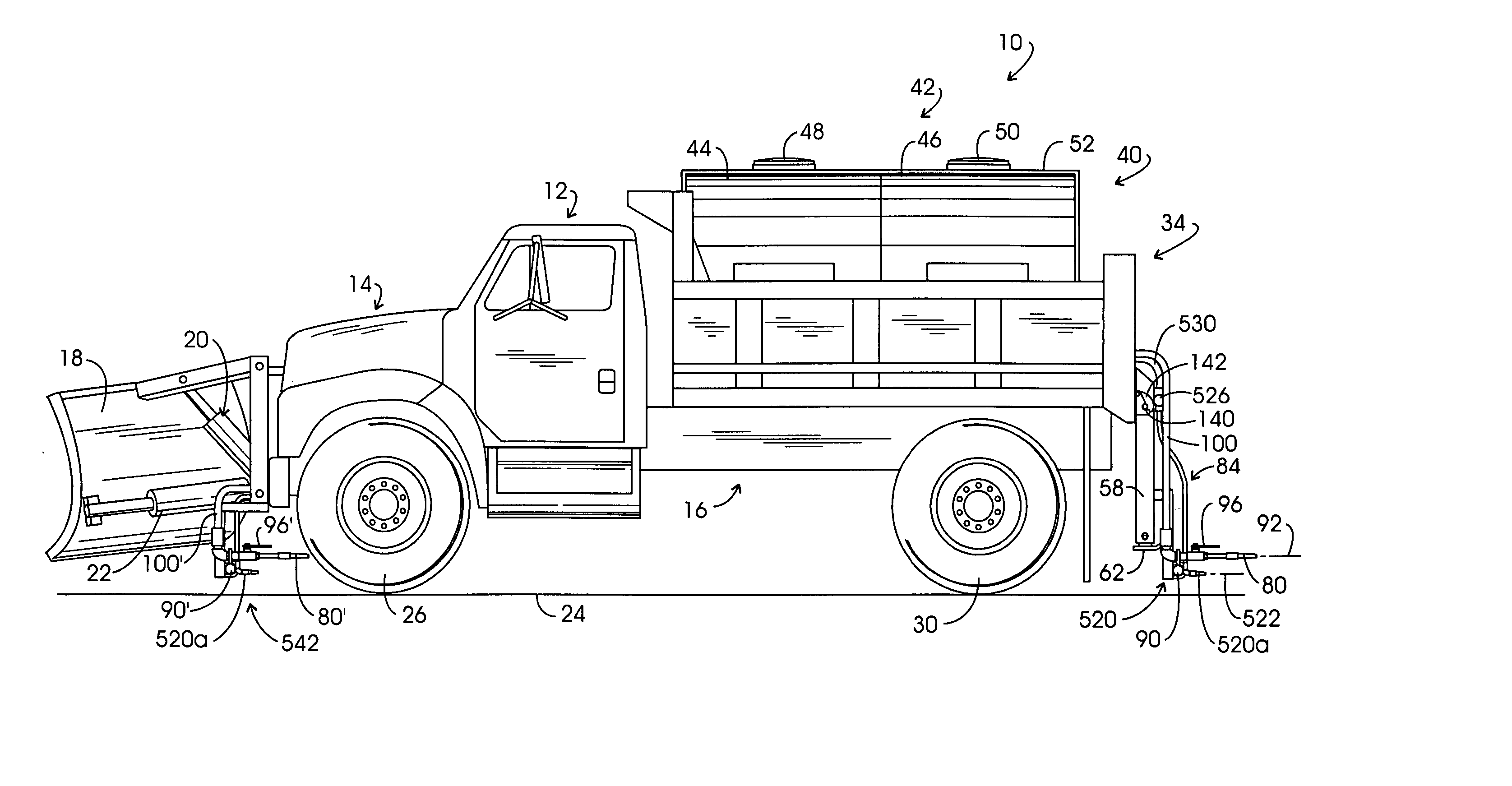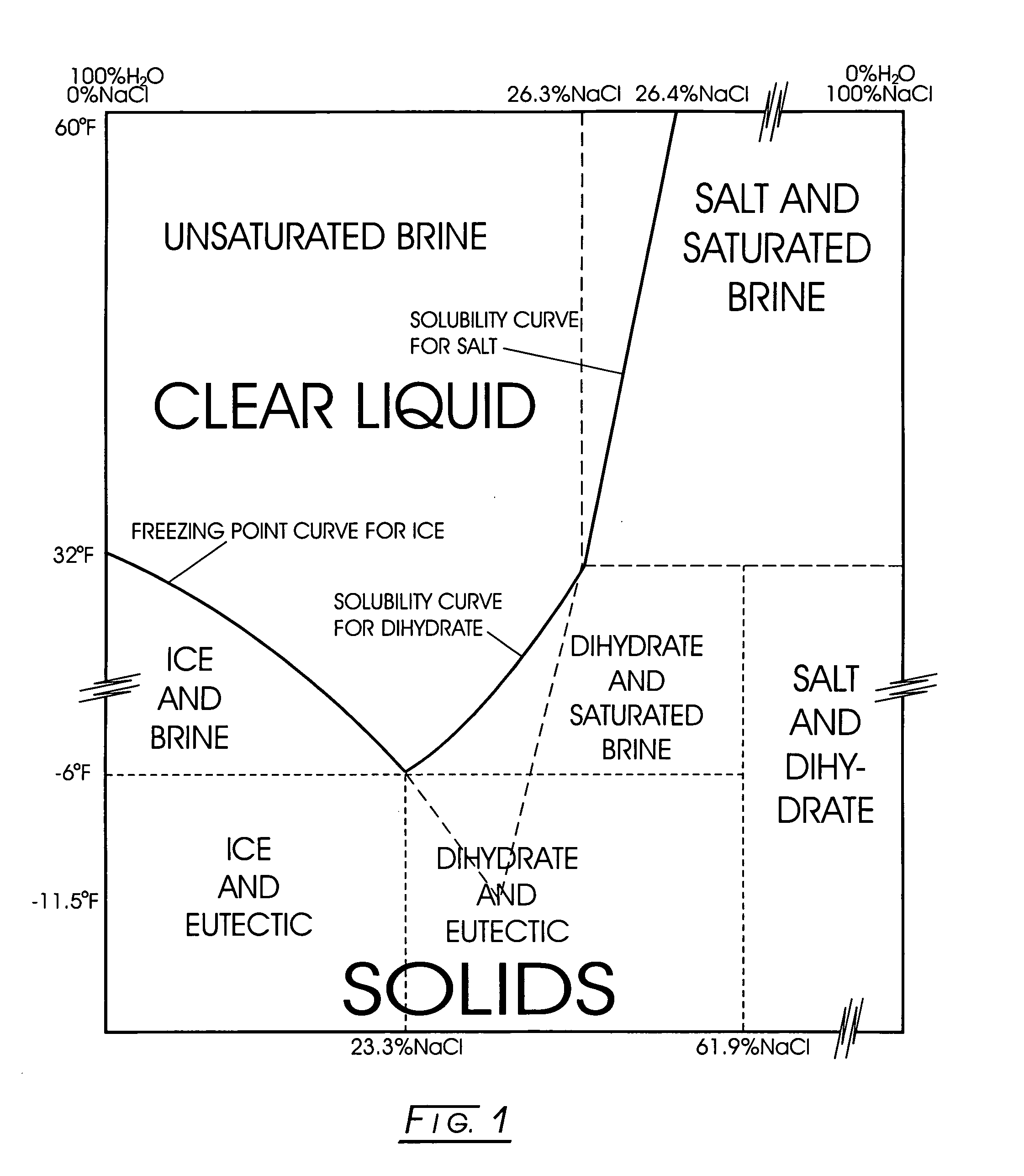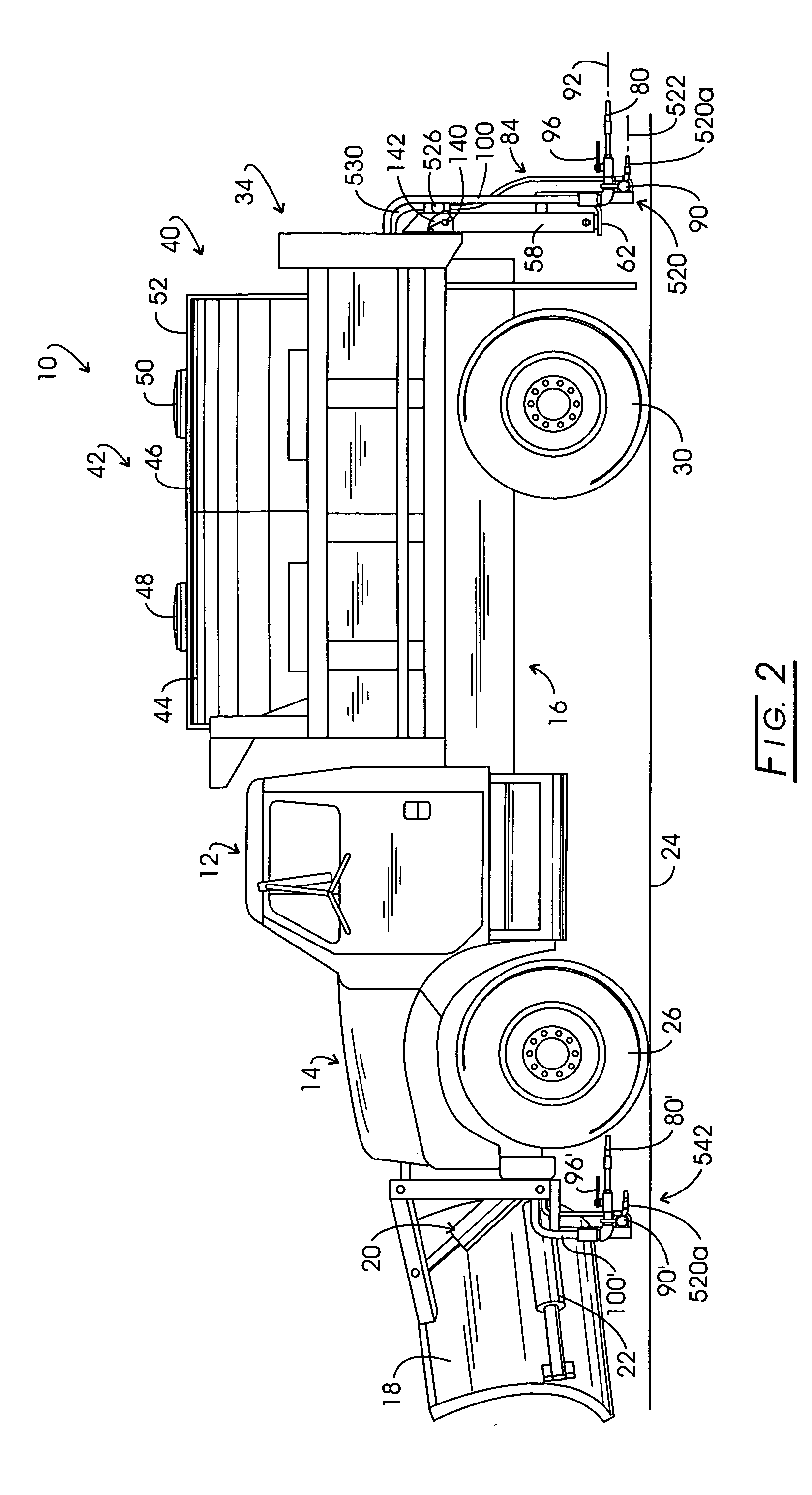Thus, when into a given run, the dump bed will be elevated, dangerously raising the center of gravity of the truck under inclement driving conditions.
Without a disruption of that bond, little improvement to roadway traction will be achieved.
For example, the plow merely will scrape off the
snow and ice to the extent possible, only to leave a slippery
coating which may be more dangerous to the motorist than the pre-plowed
road condition.
When salt has been simply broadcast over an ice laden pavement from a typical spinner, it will have failed to form a brine of sufficient salt concentration to break the ice-pavement bond.
The result usually is an ice coated pavement, in turn, coated with a highly dilute brine solution developed by too little salt, which will have melted an insufficient amount of ice for traction purposes.
In general, an adequate salt concentration using conventional dispersion methods requires the distribution of unacceptable quantities of salt on the pavement.
A result has been that the thus-deposited brine concentration essentially immediately dilutes to ineffectiveness at the ice surface, with a
resultant dangerous liquid-coated ice roadway condition.
Attempting to remove ice from pavement by dissolving the entire amount present over the entire expanse of pavement to be treated is considered not to be acceptable from an economical standpoint.
The problem of excessive salt requirements remains, however, as well as difficulties in mixing a highly corrosive brine with particulate salt.
However, as the brine passes through the granular salt material, it dissolves the granular salt such that the salt will not remain in solution and will recrystallize, causing bridging phenomena and the like inhibiting its movement into a distribution auger.
Above those slow speeds, the material essentially is lost to the roadside.
Observation of materials attempted to be deposited at higher speeds shows the
granular material bouncing forwardly, upwardly, and being broadcast over the pavement sides such that deposition at higher speeds is ineffective as well as dangerous and potentially damaging to approaching vehicles.
However, the
broadcasting trucks themselves constitute a serious
hazard when traveling, for example at 15 mph, particularly on dry pavement, which simultaneously is accommodating vehicles traveling, for example at 65 mph.
The danger so posed has been considered to preclude the highly desirable procedure of depositing the salt material on dry pavement just before the onslaught of snow / ice conditions.
Of course, operating at such higher speeds with elevated dump truck beds also poses a hazardous situation.
In addition to the hazards posed by slow speeds of travel, trucks utilized for snow-ice treatment exhibit difficulties negotiating ice coated roadways, particularly where uphill grades are encountered.
This procedure achieves only marginal traction and is manifestly an undesirable solution to this traction problem.
Notwithstanding the excellent physical results achieved with pre-treatment or “anti-
icing” roadway
brining, the problems associated with deposition on high speed interstate roadway systems have continued.
When the brine is applied from downwardly angulated spray bars at the rear of trucks at speeds above about thirty
miles per hour, significant amounts of the brine are lost, due, for example, to turbulence behind the application truck.
Compounding this deposition problem is the generation of turbulence derived brine overspray, splashed or mist which will extend about one hundred feet behind a truck traveling at about fifty
miles per hour.
 Login to View More
Login to View More  Login to View More
Login to View More 


